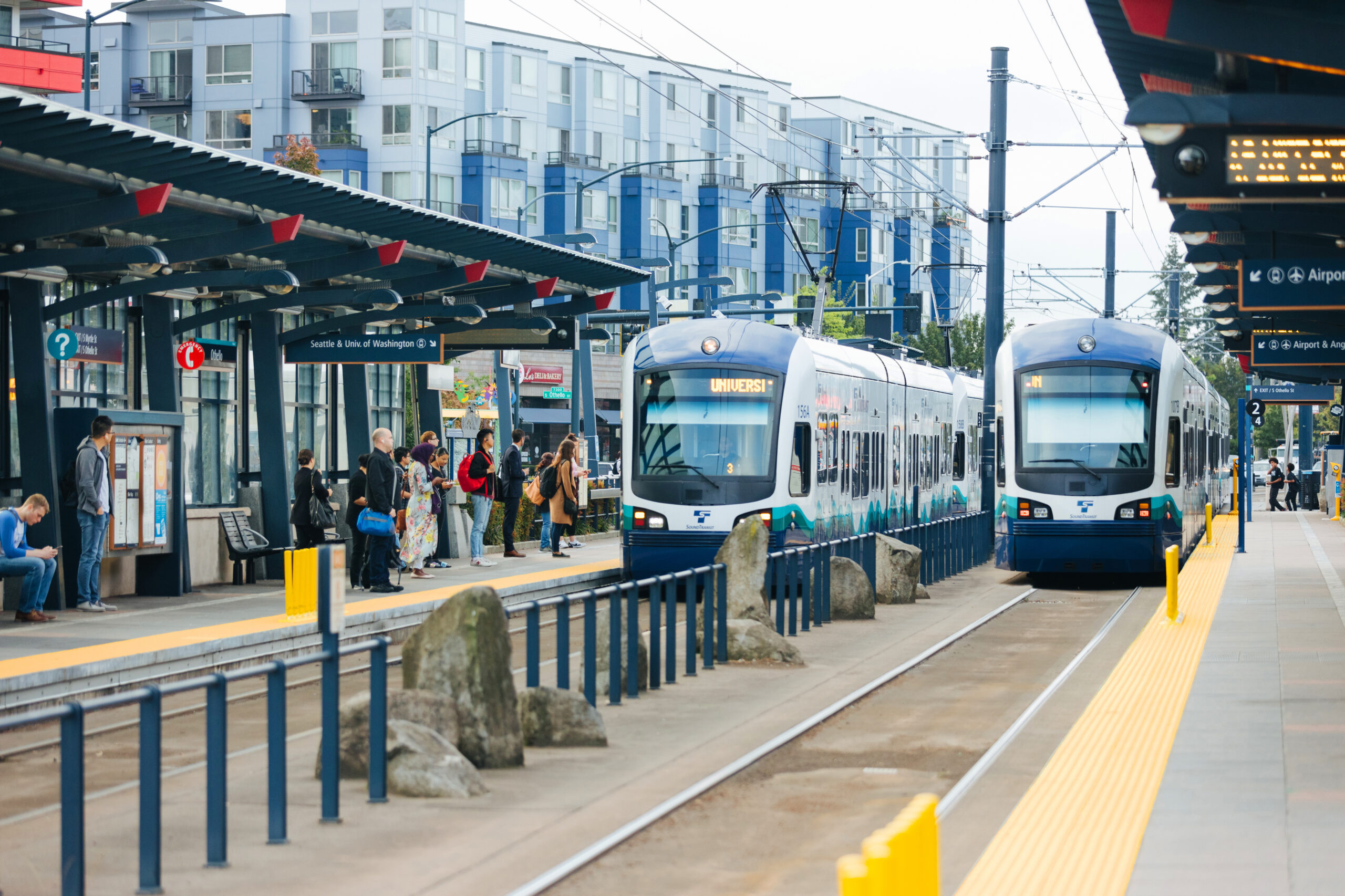Transit-Oriented Development (TOD) is a type of land development that maximizes the amount of residential, commercial and activity space near public transportation. It reflects the way communities historically developed with clusters of human development near key transportation routes like waterways and rail lines. Today, bus or rail station areas provide an opportunity to plan for compact, walkable mixed-use development.
Any community can benefit from TOD in a range of sizes and including a variety of uses. For this reason, the resource on this page may be a benefit to any community. TOD options should reflect the neighborhood where they are developed along with the adopted community vision, documented in the comprehensive plan, with a range of housing for all economic levels, a mix of employment options and, where appropriate, any active or recreation uses, such as a stadium, community pool, or public park.
House Bill 1491
In 2025, Chapter 267, Laws of 2025 (HB 1491) adopted new requirements for transit-oriented development, affecting Vancouver, Spokane and the Puget Sound region. Specifically, developments within one-half or one-quarter mile (depending on city size) of “station areas” for light rail, commuter rail or westside rail trolley and, within one-quarter mile for bus rapid transit (BRT) station areas must be allowed increased residential densities and building heights, modification of parking requirements, mandatory affordable and workforce housing options, reduced impact fee collection, and flexible design options.
Commerce is tasked with providing implementation tools to implement these changes, including a model ordinance to be completed in 2027. If you are interested in participating in that work please contact Lilith.Vespier@commerce.wa.gov.
Equitable TOD
TOD supports human-scaled compact urban development – clustering homes, businesses, employment sites, all within easy access to high quality public transit service. Successful TOD’s provide for a mix of residential, commercial and active land uses and successful TOD’s also consider existing development, land uses, and community culture before, during and after being developed. Here are a few key lessoned learned from Advancing Equitable Transit-Oriented Development:
- History and culture matter. Transit planning does not happen in a vacuum. Equitable development succeeds when it recognizes and honors both a community’s rich history and its current diversity and community assets.
- Transit agencies can set the bar for equitable TOD (eTOD). Through joint development policies, incentives and land disposal practices, transit agencies can directly contribute to equitable development opportunities both through explicit affordable housing goals or requirements, and through discounting land which can support affordable residential, commercial and retail spaces.
- Publicly-held land assets create powerful leverage point. Real estate owned by the public sector provides opportunities to engage in higher-risk catalytic projects that can transform weaker markets, be used to provide affordable housing in stronger markets, and can demonstrate market feasibility of eTOD projects.
- Economic Development Tools essential for eTOD. Beyond housing and transit, local, regional and state economic development resources are powerful tools to align with eTOD objectives. Addressing displacement and gentrification pressures is not only about affordable housing, but also ensuring that small business owners, artists, and community services can all thrive in neighborhoods around transit.
- Collaboration and patience pay off. Seattle has been working to advance eTOD in its ethnically-diverse neighborhoods for twenty years and has learned from past successes and failures. Community coalitions are critical to holding the neighborhood vision and partnering with public agencies over the long haul, and helping to inform new policies, incentives and planning efforts.
- Make racial equity an explicit goal. The Seattle-Tacoma region is notable in adopting explicit performance measures and policy requirements for public agencies to consider the racial impacts of policies, plans and investments. This explicit focus at the county, regional, and city levels ensures that community needs are prioritized, and tools adapted to support a diversity of needs including among immigrants and refugees – two groups often overlooked in transit planning and urban development.
Resources
- Commerce Transit Oriented Development Implementation (TODI) Grant page. While Commerce has no TOD planning funds available at this time, we continue to support current Transit-Oriented Development Implementation grantees and look forward to celebrating their successes.
- Examples of TODI grant-funded resources:
- HB 1110 requires larger cities in Washington to increase density in transit zones. Please find more information on our Planning for Middle Housing page.
- Transportation Efficient Communities resources on land use and transportation planning
- WSDOT Community Planning Portal a great source for state transportation data
- WSDOT Multimodal Accessibility
- WSDOT Kingsgate Park and Ride Transit Oriented Development Pilot (PDF)
- PSRC – TOD regional committee
- Sound Transit Station Experience Design Guidelines (PDF)
- Sound Communities TOD resources – provides a manual for station area development
